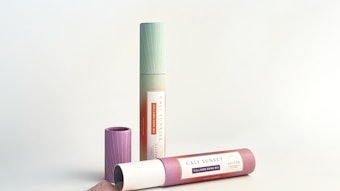- Global trends are now a general compass for future product development, with regional trends informing global ones.
- “Control” is a mega trend in beauty that can range from consumer influence over ingredient choice in their products to the growing power of the consumer through exercising her voice in social media. The consumer is an active participant in her shopping experience, and she is in the driver’s seat.
- Anti-aging treatments now extend beyond preserving the youthful appearance of the skin, as aging is known to affect the hair as well.
Innovation and marketing trends in beauty and personal care are becoming truly global. The time when the Western markets set the trends in beauty and personal care products and all other markets followed has changed. Increasingly, developing nations are putting forth exciting new trends, and the established markets, such as Western Europe and the United States, are eagerly snapping these up and rolling them out into their own markets. Many exciting new innovations, such as Brazilian straightening treatments and BB creams (beauty balms or blemish balms) are making their way into the hands of consumers around the globe. These innovations have already begun to impact the global personal care market.
The hair care market is following the market trend of personal care in general, experiencing influences from the needs and desires of consumers around the world. This sizeable market is still growing, having rebounded from a decline in 2009. The global hair care market grew 6.7% from 2009 to 2010, reaching a retail value of $67 billion U.S. dollars (Euromonitor International, 2011). All categories in the hair care market, from shampoos and conditioners to styling agents, are experiencing growth, with the greatest growth being seen in the colorants market, at a rate of 9.5% (Euromonitor International, 2011). This growth offers great opportunity to hair care brands that can use global trends and consumer demands to tap into the growth potential of the hair care market.
Global Market Trends With Regional Appeal
As noted, global trends once came from Western Europe or North America, but new trends are starting to emerge from other regions around the world that may eventually become global trends. As such, global trends now become a general compass for future product development, with regional trends now informing the global ones in two ways. The first, by determining if global trends need to be nuanced or modified to reflect regional needs, which is reflected in product variants that differ from region to region to answer specific needs created by the local environment or ethnic composition. Secondly, it can be determined if this regional trend will become a new global trend. Some examples of regional needs are combing creams from Brazil and blackening shampoos from China, and time will tell if these become global trends. For this discussion, the focus will be primarily on global trends with regional nuances considered, yet there will be examples of regional trends that are showing global appeal.
Beyond the Basics
Once upon a time, a shampoo needed only to clean the hair—and this was a good hair care regimen. Conditioners were then added to the portfolio, and they provided detangling and an overall conditioned feel to the hair, which greatly improved a consumer’s experience. Now these functions are considered basic, and are expected as part of the core functionality of the system. This introduces the first global trend: “Beyond the Basics,” in which consumers expect their daily grooming products to deliver more than these simple functions.
Multifunctional cleansers and conditioners are in the global marketplace in abundance. Croda’s formulation team in Asia developed “Detoxifying and Strengthening Shampoo,” which illustrates this multifunctionality well. It gently cleanses environmental pollution while strengthening the hair and protecting it from future aggressions. This formulation has an airy foam for great product feel in use, which can contribute to supporting the product benefits. Products claiming to detoxify and protect the hair are launching around the world, and formulations such as this tap into this trend.
In addition, sulfate-free shampoos are proving to be more ubiquitous around the globe. Many multinational brands have sulfate-free lines, offering solutions for consumers seeking gentler products. And there are shampoo prototypes that utilize mild detergents for gentle cleansing with excellent foaming, natural solubilizers and protein co-polymers to protect the hair from everyday grooming damage, such as that sustained from blow-drying, while still offering full, rich lather and creating a luxurious, satiny sheen on the hair.
Control
One mega trend in the beauty market is that of control, which encompasses a variety of things, depending on the consumer. It can range from consumer influence over ingredient choice in their products, where consumers may seek natural ingredients or “free-from” claims, to influencing one’s personal style through styling agents or chemical hair treatments. It also addresses the growing power of the consumer through exercising her voice in social media circles. The consumer is an active participant in her shopping experience, and she is in the driver’s seat.
There are many types of styling products on the market, with forms ranging from sprays to serums to creams. All these allow the consumer to control her hairstyle and improve her appearance. An extremely popular product on the market is flat iron heat protection serums, as these protect against the high heat from styling appliances. Serums are interesting forms in hair care, having appeared often in skin care or salon hair care, yet they are now more mainstream and globally available.
Beyond day-to-day styling, more permanent treatments such as hair relaxers and hair color remain strong in the market with consumers seeking to control their hair in a more dramatic way. In this area, performance and convenience play a more important role as treatments need to work better, faster and be easier to use, especially in the case of at-home treatments. Convenience is considered to be a huge consumer benefit, as simple, “user-friendly” products are extremely appealing. An example, developed by the North American formulating team, the “Vibrance Infused Rapid Hair Color” creates faster, richer, more vibrant and longer-lasting color, with the color depositing on the hair in just 10 minutes.
In addition to these expressions of control, protection and prevention are aspects where the consumer is exerting control over her environment by preventing the damaging effects of the sun or other environmental factors, such as pollution. There are many concepts that show this in the marketplace, from UV protection sprays and creams to examples like the detoxifying shampoo. A prototype of a moisture control combing cream, which assists in reducing hair volume and controlling frizz, was developed in response to hair needs in Latin America, as well as improving the healthy appearance of the hair by improving shine and creating a smooth look.
Anti-aging
As consumers are living longer and longer, anti-aging treatments are a trend that seems to be here to stay. This now extends beyond preserving the youthful appearance of the skin as aging is known to affect the hair as well. As we age, the hair becomes more brittle, less dense, more porous, drier and less shiny—all this is in addition to graying. In a study on how hair changes with age, hair fibers were collected from 81 Japanese men, ranging in age from 2–91, and measured for thickness of hair fibers, strength and brittleness. It was shown that hair becomes thinner, weaker and more susceptible to damage.1
A trend in hair loss prevention products from Asia and Latin America, which address the loss specifically due to age, is spreading globally, and formulas that provide a “moisturized” feeling to the hair, deliver shine, soothe the scalp and strengthen hair fibers to resist breakage address the brittleness and weakness common in aging hair.
With regional trends now commonly growing into global trends, the consumer wants and needs in one market are very likely to become the consumer wants and needs in another. In addition, mega trends impact how and why consumers choose their beauty products. Formulations that address global needs and the consumer tendencies born of mega trends can both provide a catalyst for new product concepts and the key for effectively reaching growing consumer targets.
Reference
- N Naruse, T Fujita, Changes in the Physical Properties of Human Hair with Age, J Amer Geriatrics Soc 19(4), 308–14 (1971)
The data that is the basis for this contribution was developed collaboratively by Croda’s innovation teams around the world and published in a brochure titled Global Hot 10: Hair Care Favorites, available at www.croda.com/na/pc/GlobalHairCareHot10. Samples of all 10 formulation prototypes are also available on request by contacting Croda.
Cara Eaton is marketing manager, communications, for Croda Inc in Edison, NJ. She manages Croda’s North American communications programs, including advertising, e-seminars, direct mail, website and other communications initiatives. Cara holds a bachelor’s degree in English literature from Bowdoin College in Brunswick, ME, and is a member of the Society of Cosmetic Chemists and Cosmetic Executive Women.
Regan Tillou is the marketing manager, hair care for Croda Inc. She started her career with L’Oréal as a development chemist in Clark, NJ, and also spent two years working as an engineer for L’Oréal in France. Tillou holds a bachelor’s degree in chemical engineering from Cornell University.
Christophe Toumit is the marketing manager for personal care brands at Croda Inc, and is responsible for trends and market understanding in personal care, with a special focus on brands and consumer insights. Before joining Croda, Toumit spent four years at Firmenich Inc. in fragrance marketing for the personal care market. Before this, he worked for L’Oréal in Paris and held various domestic and international marketing positions in the L’Oréal Luxury Products division. He holds a master’s degree in Applied Economics and Management from ESSEC University in France and a bachelor’s degree in Biotechnology and Food Processing from Université de Technologie deCompiegne in France.










